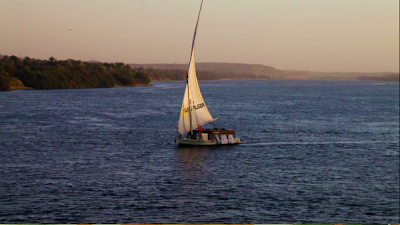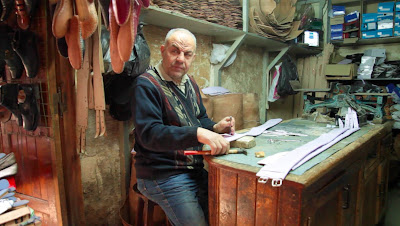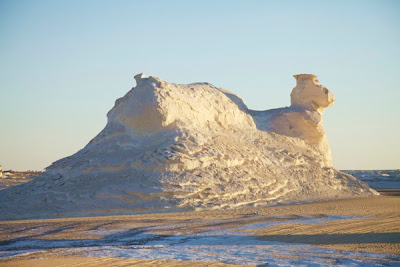New York to Sydney 2012 In shaa'Allah
By way of Portugal, Israel, Jordan, Egypt, Istanbul and Bali
Thursday, March 23, 2017
Friday, March 16, 2012
Misr um al-dunya: Mother of the World. Part II
Wednesday, March 7, 2012
Tuesday, March 6, 2012
Cairo. Mother of the World. Part 1
My first day in Cairo, and I'm on my way to see the pyramids. The city is cloaked in haze, because this time of year winds blow fine sand in from the desert, turning everything—domed mosques with their slender minarets, arched bridges across the Nile, once modern high-rises, the occasional faded grande dame of the belle époque, the endless neighborhoods of 6-story apartment buildings with their mushroom forests of satellite dishes, groves of date palms and distant hills—all grow soft with distance into delicate layered silhouettes. This scene would be quite beautiful if it wasn't for the fact that every driver is constantly leaning on his horn. After driving for about 20 minutes on the elevated highway, traffic comes to a near standstill, and Mahmoud, my driver, manages to inch us towards and finally off an exit ramp and we suddenly drop into a netherworld of narrow streets, choked almost to a standstill with traffic escaping the blocked highway. Crowded minibuses are stopping anywhere and everywhere to pick up and drop off passengers, pedestrians weave between cars, some hawking wares, others just crossing, battered cars, van, cabs, push carts, donkey carts precariously over-loaded, and tuk tuks and boys on motorbikes blithely riding the wrong way, then insistently jostling a right of way through the intersection—all the while honking and shouting. It's a squalling, dusty road riot, a Cairo, of decrepit apartment buildings and their little shops lining the streets, their merchant's wares wrapped in plastic as protection from the constant dust and dirt. Cafes spill out onto the side walk, crowded with men chatting, drinking tea and smoking shish; fruit sellers, their shops adorned with hanging bags of oranges, serve customers lining up for freshly squeezed juice; boys on bicycles balancing large trays of bread on their heads; women covered head-to-toe doing their morning shopping, or delivering their children to school. The worst is the garbage. It's everywhere, in the gutters, on the footpath, and piled thigh high in any abandoned space and seemingly ignored by everyone. I see drivers casually tossing more garbage out of their cars as they drive, plastic bags swirl in the wind. We pass abandoned cars, pushed onto the battered median, they've been there for so many weeks or months they're becoming part of the street, completely embedded in their own piles of plastic and litter and covered with dust and grime. We are eventually forced onto a crowded road that runs along a canal whose banks are entirely lined with garbage, even my driver and guide haven't seen these streets or this appalling ditch. I have never seen anything like it and can't imagine that darkest Calcutta could possibly be any worse. After an hour we finally inch our way out of this maze and at the end of the street, Shaimaa, my guide, points out the top of the Great Pyramid in the dusty distance. Ten minutes later we're on a busy road in Giza, and the pyramid's stupendous symmetry rises only a few blocks away. Half an hour more and I'm standing, gawking, beside the 4,700 year old 5 ton shoulder-high stones that have been hewn from quarries then barged hundreds of miles down the Nile, somehow dragged high up onto the Giza plateau then laid with such precision to form this impossible behemoth. I look up, it rears over me, taking up the entire sky.



I have not changed the color of these photos.



I have not changed the color of these photos.
Finding an uncle I never knew.

Four days ago I set out for the Mediterranean and the WWII battleground cemetery at El Alamein, about 4 hours driving north west of Cairo. I want to find the grave and pay respects to my father's eldest brother, John, who was killed in the battle of El Alamein in 1942. He died fighting for the British in the Western Desert Campaign with the ANZACS, other boys from home, against the axis forces under Rommel. No family member had ever been able to travel to Egypt to visit his grave. One of Dad's sisters once told me—I remember when we got the news. It was terrible . . . Mum never really got over it. She died ten years later aged 52, just a few months after I was born. I realize now, how these two events must have devastated Dad's family. Back in the 50s when I grew up, memories of John and his mother were obviously still quite fresh for my grandfather, my father, my aunts and uncles and they often mentioned him.—John and his mates used to go way up into the hills to ski, I don't really know where, behind Kimbolton somewhere, I think—Look at these photos of the early days at 'Kop' (Koputaroa, where they lived)—That's John with Mum look at those clothes! And,—here's John and his mates with the old car—Here's the photos he sent back after he went away to the war—Here he is in uniform at the Pyramids with camels! Camels! and the Pyramids! Look at them all!—How old were you when John was killed, Dad?—Why was he in Egypt? I had visited the Pyramids myself a couple of days earlier and tried to imagine what it must have been like for those young NZ boys in 1942, and I can't.
I had done some research about the war cemetery online before I left and had found his grave number and the letters, I. C. 2. in the listings of the dead at El Alamein, so I knew for certain he was there. But when we get here, the map in the visitor center seems to bear little relation to the online coordinates. There is no alternative but for me and Shaimaa, my guide, to go systematically row by row through this huge cemetery until we discover where the New Zealanders are buried and hopefully find him. So many graves. I haven't prepared for the rain and wind that is now coming through in light squalls, but I can see clear patches and hope the sun will come out and make everything a little easier. The cemetery is well-tended, there are clumps of bougainvillea in flower, cacti, acacias and flax-like bushes breaking up the rows. My mood becomes somber, and if you've ever walked in one of these vast war cemeteries you'll recognize the feeling. Thousands upon thousands of very young men, most of them in their early 20s, one or two as young as 19, with a few in their late 30s or older, all killed within a few days of each other. After about half an hour we eventually find the New Zealand Machine Gun Battalion and I start to recognize family names common in New Zealand—Blackburn, Cottingham, Hogg, Jenkins, Barrett, Milne, Steadman, Booker, Turner, Weir and so on, some are unidentified and poignantly commemorated as Known only to God. We eventually find him and I am suddenly moved at seeing his name, my family name, on this grave in the Egyptian desert, far from home. 7739 PRIVATE L. J. SCIASCIA N.Z. MACHINE GUN BN. 5th JULY 1942 AGE 24 above the Silver Fern—the national emblem—and New Zealand in a circle at the center of a cross. The rain has finally stopped, I read a short prayer in Maori I'd copied onto a sheet of paper for this moment and lay some wild flowers against the headstone we'd picked beside the road during the drive here. I can't help thinking about a mum and dad 70 years ago hearing the news of their son killed in Egypt.
Now it's a relief to have some work to do. I set up the camera on the tripod I've carted half way round the world, and shoot some video. I'm making a short commemorative piece about John once I get to Sydney—principally for my father and uncle—John's last two surviving siblings. I forgot about leaving the card, with wording I'd agonized over a couple of hours earlier. Finally settling on —Uncle John. You were never forgotten by your mum and dad and all your brothers and sisters in New Zealand. Arohanui. David Sciascia. The wind would have blown it away anyway, as it had the flowers, even before I'd left the cemetery.
Soon we're off again, driving east along the coast to Alexandria, now in bright sunshine. The ocean, glimpsed through gaps in seemingly endless, crass, condo development, is a brilliant turquoise.





Germans hiding toasters.
After breakfast on the second day of the cruise I ask Ahmed, my guide, if they could make me some toast—Yes. Just ask tomorrow and they'll make it in the oven for you. I think, what kind of a luxury cruise is this, if there's no toast for breakfast? Next morning I ask the waiter if he could make me some toast. Ahmed is off smoking somewhere, and isn't on hand to translate my request—Toast, Sir?—Yes, you know, bread made brown in the oven. I point to the bread and go through the actions of making toast. I even mime 'hot' and 'crisp'. He brings over another waiter whose english might include this mystery word. He comes over—Can you make me some toast? Once more I explain and mime what I want and he nods and smiles with recognition—Yes, Sir. Toast. A few minutes later a plate containing brownish untoasted bread is brought to my table—No, this is still bread! (Unfortunately, when I speak to non-english speakers, everything tends to be exclamatory.)—See? Still soft! I poke at the bread—Not hot! See?—Yes Sir. I go on—I'm sure the English passengers ask for toast? What about these Germans, don't they ever ask for toast?! I actually say this out loud. I can hear myself, and it's right out of Basil Fawlty's mouth—They bring their own toasters from their homes, Sir—They bring their own toasters?—Yes, Sir. (Clearly they bring something from their homes but it most certainly is not toasters)—OK, shukran.
I really want toast though. Maybe I could go into the kitchen and make some?—Give me that!
Since then, I've been watching the Germans. None of them have toasters. They are probably hiding them in their cabins. Bastards.
I really want toast though. Maybe I could go into the kitchen and make some?—Give me that!
Since then, I've been watching the Germans. None of them have toasters. They are probably hiding them in their cabins. Bastards.
Saturday, March 3, 2012
Reflections on five days cruising the Upper Nile, and visiting the major tombs and temples of ancient Egypt, with my guide, Ahmed.
I will make no attempt here to describe all that I have seen or experienced during my days and nights on the Nile, of the exquisite tombs of the Pharaohs I entered, the temples I explored, open mouthed, and dumb founded, nor any of the stories of the 700 deities, their cults and priestly ceremonies, or the 3000 year history of the Pharaohs, that Ahmed—my guide, philosopher and teacher —spoke of, and whose brooding silences so perfectly matched my own, especially at breakfast time—who knew instinctively during our daily excursions when it was high time for coffee, a smoke and a sit down, and was wise enough not to talk incessantly, like most guides, about everything he knew, in fact to remain gratifyingly silent until I enquired—What is that? Or the slow-moving vista unfolding relentlessly on both banks of the river as we sailed south against the strong current. Landscapes of date palms, fields of sugar cane, sand dunes, sandstone cliffs, low islands of reeds and water lilies, farmers with their cows, galibaya-shrouded women carrying jars of Nile water on their heads at sunset, small boys in impossibly tiny boats rowing with 4x2s for oars, the countless mosques in sun baked towns with the muezzin's call to prayer carrying clearly across the water, cruise boats returning downstream to Aswan, sans tourists, hooting and tooting. Or navigating the great locks at Esna, and how touts and merchants in tiny motor boats attach themselves to our vessel—which never slows—and hold up their wares and shout greetings and pleas in several languages to our reluctant passengers, to buy all manner goods, which are then rolled into tight bundles and lobbed high in the air from below, to much laughter, clapping, cheers and shouting. Or watching the sun set over the Nile's western bank, and seeing Jupiter, Venus and the crescent moon in conjunction in the westering sky, is to die. Or riding in the early morning by horse and carriage with dozens of other tourists from the the dockside melee at Edfu to visit the great Temple of Horus, and so on. No words or pictures could convey all this. To say nothing of how the entire surface of every wall and ceiling of every chamber in every ancient temple, tomb, large or small, is incised, carved, drawn upon or painted brightly in the most exquisite ways, and imagine the impact this had on the simple farmer or stone mason who lived in simple mud brick houses. And bless those 21st century idiots who don't know how to turn off the flash on their digital cameras, which now necessitates the complete ban on any photography whatsoever in these fragile chambers, so that you are forced to give complete attention to the staggering artistry of the hieroglyphics and uncountable, scenes depicting the heroic afterlife of the Pharaoh, his offerings to the gods, triumphs over his enemies, the obsessive recording of knowledge, calendars and ancient technology, science, medicine, wine-making, agriculture, the butchering of animals, food preparation and so on. Or the representation of thousands of priests ceaselessly enacting the sacred rituals, or the Pharaoh's vanquished enemies, covering—as I said before—every surface of the burial chamber—floor, wall and ceiling, then loaded with fabulous treasures and trappings, fit for a Pharaoh in his eternal afterlife with all the necessary royal clothing, bedding, furniture—domestic and ceremonial—folding thrones and beds, suitable for travel or hunting—all gilded inside and out or inlayed with exotic hardwoods and precious stones, all manner of boats and barges, large and small, chariots, and provisions of every sort, containers for scents and lamps, and finally jewelry of lapis lazuli, carnelian, quartz, obsidian, turquoise and glass and faience—jewelry that surely inspired Lalique and Tiffany, then all of this hoard placed within gilded shrines nested within gilded shrines, exquisitely carved, foretelling the glorious afterlife, and finally the stone sarcophagi, containing the mummiform coffins nested within coffins which at last enclose the Pharaoh's—the living God's—dazzlingly masked, banded and bejeweled mummy, sealed for all eternity. This has to be seen by one's own eyes to be believed. And, as I stated above, I will make no attempt to describe all this. All I can say for certain, as an eye witness to these achievements, from the near perfect stone masonry and precise carving of stones weighing a staggering 25 tons or more, down to the finest, detailed, gilded and inlaid jewelry—this is categorically not the achievement of the resentful, forced labour of slaves.
(Composed on a Saturday night during the consumption of only 3 glasses of wine at a buzzing, shish-smoking bar and restaurant filled to capacity with local literary and revolutionary types, on Zamalek, an island in the middle of the River Nile, Cairo.)









(Composed on a Saturday night during the consumption of only 3 glasses of wine at a buzzing, shish-smoking bar and restaurant filled to capacity with local literary and revolutionary types, on Zamalek, an island in the middle of the River Nile, Cairo.)









Subscribe to:
Comments (Atom)

























